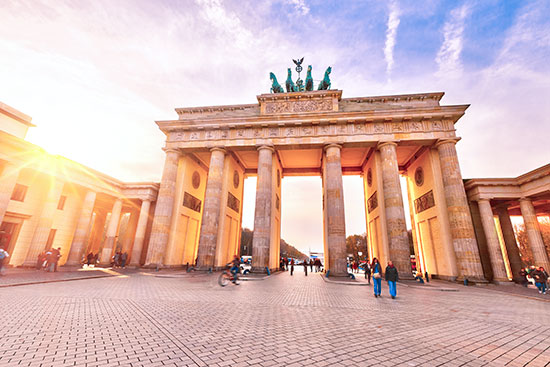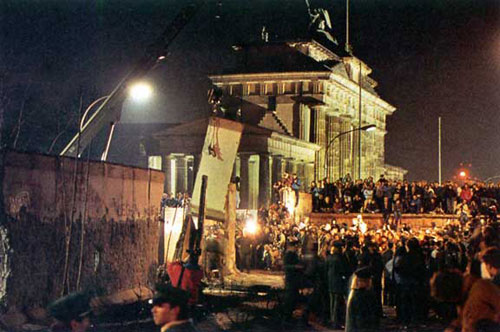A – Alexanderplatz. The heart of the city, this square was named in honor of Tsar Alexander I in 1805, which is when he visited the city. The train and metro station is one of the busiest on its square you’ll find the World Clock and TV Tower as well as several shops and restaurants. Locals refer to as ‘Alex’.

B – Brandenburger Tor. The Brandenburg Gate is probably the most iconic landmark of the city. It was built in the late 18th century by the Prussian King Friedrich Wilhelm II as a symbol of peace. Today it is a place of celebration for modern-day Berliners, from the fall of the Wall to the New Year.
C – Currywurst. Don’t leave Berlin without having tried currywurst, a grilled sausage that is cut into pieces and served with ketchup topped with curry powder, sometimes eaten with a roll. They sell it in several places at stands on the street so you can eat it on the go.
D – Division. Berlin was a city divided by a wall for 38 years, during which West Berlin was part of capitalist West Germany and East Berlin was part of communist East Germany. The wall erected in 1961 divided families and friends for nearly four decades, during which time it was difficult or impossible to visit one another.
E – East Side Gallery. It is the name given to a part of the Berlin Wall that is still standing. It’s called ´gallery´ because the wall itself is decorated with artistic works by a variety of artists. A must-see stop.
F – Fernsehturm. Which is the German word for TV Tower. The tallest building in the entire city, this tower is 368 meters tall and is the second tallest building in Europe. In the glass dome there’s a restaurant that gives a 360º view. The elevator travels to the dome in only 40 seconds.
G – Grunewald. The Grunewald forest is a great place for hiking near Berlin. Located west of the city, this forest can be reached conveniently by S-Bahn. One can easily enjoy the peace and quiet or have a picnic surrounded by trees and green.
H – Hohenschonhausen. This district in former East Berlin is where the prison was located in GDR times. Today it is a museum that can be visited. In its cells you can learn about the stories of its former political prisoners on a guided tour.
I – Icke. Even if you know a little German, you may be surprised when Berliners refer to themselves as ´icke´ instead of ‘ich.’ And of course, there’s what’s known as the Berliner Schnauze, the Berlin dialect.
J – Jews. In Berlin you must visit the Jewish Memorial, a sculptural complex of 19,000 m2 concrete blocks of different sizes and heights that has been constructed as a memorial to all the Jews murdered during World War II.
K – KaDeWe. The Kaufhaus des Westens or KaDeWe, as the Berlin’s famous shopping center is known, is the largest in Europe. With more than 60,000 m2 of shops distributed over eight stories, it receives more than 50,000 visitors a day. If you want to buy something in Berlin, this is the place.
L – Little Istanbul. Little Istanbul is another way of referring to the district of Kreuzberg, due to its high population of people with Turkish background or origin. So if you want to try the best doner kebab ever, buy it in Kreuzberg.
M – Museuminsel. The Museum Island is located in the middle of the Spree River in the district of Mitte and contains five of the best museums in Europe, museums with collections ranging from ancient art to 19th-century German art. Altes Museum, Neues Museum, Alte Nationalgalerie, Bode Museum and the Pergamon Museum are required stops for any art lover visiting the German capital.
If you want to discover this and more, here are some of our recommendations:
Look for an attractive apartment in Berlin from 21€ and explore the city your own way. If you need help, use our A to Z guide.

 English
English Français
Français Deutsch
Deutsch Italiano
Italiano Español
Español